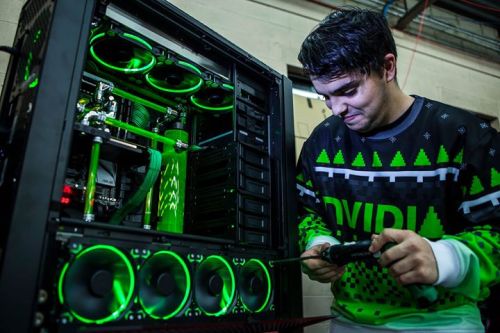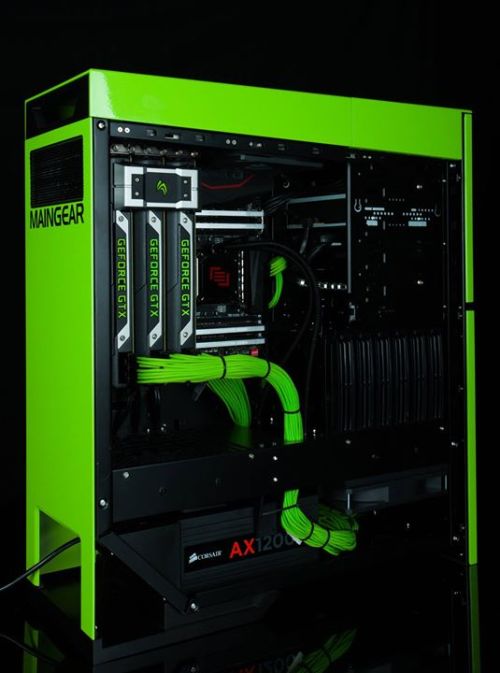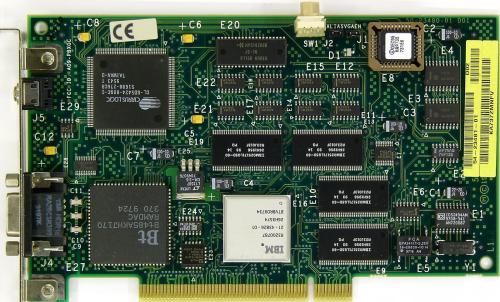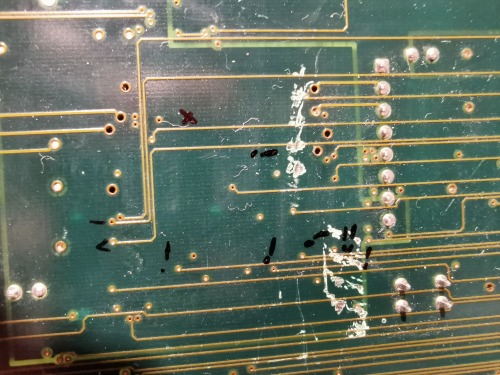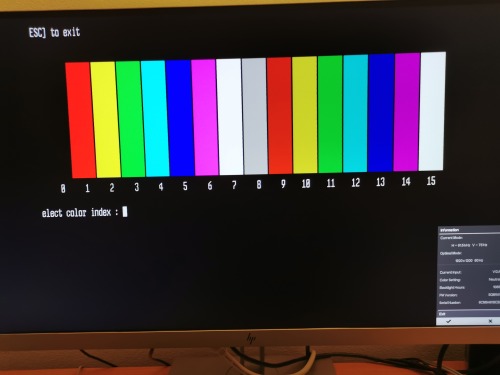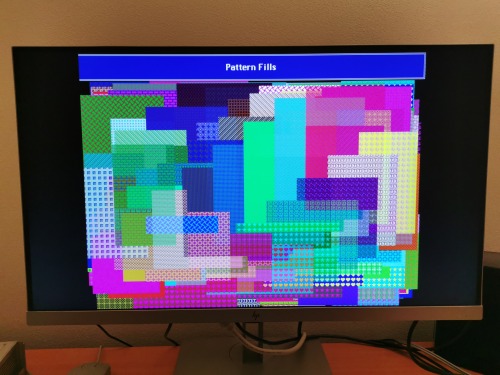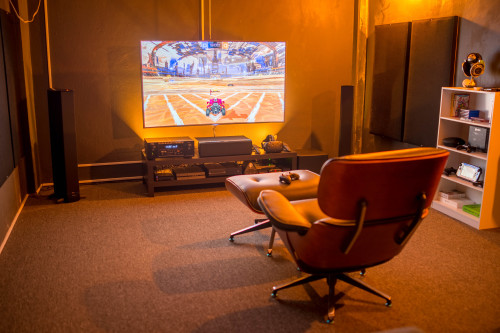#graphics card
…
fetish-n \ˈfe-tish also ˈfē-\
an inanimate object worshipped for its supposed magical powers or because it is considered to be inhabited by a spirit.
…
Post link
DEC PowerStorm 3D30 / TGA2 (March 1996)
PowerStorm 3D30 was an early low-cost 3D accelerator from Digital/Compaq. It cost just $795 and offered up to 1280x1024 in 256 colors (this was the maximum for all resolutions). Most of you presumably don’t know the card, because you could not find it in a standard PC. It was designed for DEC’s workstation based on Alpha CPUs. There is very little info about it (often not even correct) so I decided to consolidate all I know about it. This is what I know and what I was able to measure on a real hardware (thanks to Kyle Fox):
Basic description
The card uses the standard 32-bit PCI interface and contains three big chips. Cirrus Logic CL-GD5424 is an SVGA chipset and has its own 256kB of memory (16-bit). Its purpose is just to provide VGA compatibility during boot, before a graphic driver is loaded by the OS. There is even a switch on the card that can disable it (for multi-monitor solutions with multiple cards).
The Bt485A chip is a 170MHz true-color RAMDAC that has a standard input pixel port together with a separate VGA input port. Thus, it allows a cheap way to connect both graphics chips to a single monitor output and switch between them.
The main chip (“TGA2”) is the silver one manufactured by IBM (and designed by DEC). It’s a graphics controller with support for 2D, 3D and limited video acceleration. In this particular card (3D30), it has only 2MB of video memory, which cripples the maximum color depth to just 256 colors (PowerStorm 4D20 with the same chip supports also 12-bit and 24-bit modes).
In 2D/video, it offers standard BitBLT operations, YUV-RGB conversion and a very primitive 1-D video scaling with filtering (yes, hardware does the job only on horizontal axis; vertical scaling is handled by the CPU). There is no support for multiple 256-color palettes, which means that the video is converted to colors available for the whole desktop.
3D acceleration
The chip supports following features in hardware:
- Double-buffering (contrary to SGI, the back buffer is stored in off-screen memory and copied once the frame is complete)
- Z-Buffer (including the necessary depth operations)
- Line and polygon drawing (wireframe, solid, smooth-shaded) … contrary to several sources the chip is not limited to just wireframe drawing
- Color dithering for 8-bit and 12-bit color modes
- Fast color interpolation (for Gouraud shading)
Thus, there is no support for alpha-blending (transparency effects), fog and textures. Don’t expect playing GLQuake-like OpenGL games on this. The chip’s targets are 3D modeling/simulation and CAD/CAE.
DEC decided not to integrate geometry unit (transform & lighting) known from hi-end professional cards of the era and let the powerful Alpha CPU do the job.
We have tested the card under Windows NT 4.0 using our GPUbench program running under FX!32 emulation (fortunately, most of the tests generate very little CPU load so this doesn’t affect the results and the graphics driver runs as native code). This is one of very few cards being able to accelerate 3D in 256 colors with Windows.
The driver is limited to OpenGL 1.0.1 with extensions for vertex arrays. Unlike NT4 drivers for Matrox Millennium I/II and ATI Rage II cards, this driver is full ICD (installable client driver) so it handles the whole rendering pipeline. Early ATI and Matrox cards used MCD (Mini-Client Driver), which is basically a modification of the Microsoft’s OpenGL software renderer, where you can accelerate just the features available by the card (for example only untextured polygons). The issue with MCD is that you cannot accelerate the geometry processing. On the other side, MCD allows you to use even the features that are not supported by the card. DEC’s ICD driver completely ignores textures and does software emulation only for alpha-blending.
Having OpenGL acceleration in 256 colors brings color palette issues. The driver expects RGB 332 palette by default and if the application doesn’t handle this, colors will be wrong (OpenGL applications often didn’t care as they assumed at least 16-bit colors).
Performance
- Rasterisation speed is surprisingly good with 69 Mpix/s (millions of pixels per second) with smooth-shaded (untextured) polygons. This decreases to 38 Mpix/s when Z-Buffer is enabled. This allows the card to render 60 fps in 640x480.
For comparison with other cards (with enabled Z-Buffer): 50-MHz S3 Virge = 24 Mpix/s and 48MHz ATI Rage II+ = 21 Mpix/s, Matrox Millennium = 32 Mpix/s, SGI O2 = 56 Mpix/s, SGI Indy XL/XGE = 9 Mpix/s, SGI I2 Maximum Impact = 240 Mpix/s - Geometry pipeline can handle up to 606,000 vertices/second (516,000 with Z-Buffer) in a form of triangle strips or 329,000 independent triangles/second (291,000 with Z-Buffer).
This is about 30-50% of UNIX hi-end and about 80% of PC workstation hi-end. Geometry performance is comparable with SGI O2(300MHz MIPS R5200 with vector units; 1998). Consumer cards in a Pentium MMX 200MHz PC could handle no more than 100,000-200,000 vertices/second and 40,000-70,000 independent triangles/s (with enabled Z-Buffer) - Alpha-blending done in software causes significant performance drops to just 1.4 Mpix/s. If it’s possible, it is better to avoid this feature and use stipple alpha instead.
Verdict
It seems that this was a good low-cost choice for powerful universal technical workstations. Geometry performance was especially good thanks to the power of Alpha CPUs, which made it a better choice over SGI’s low-end (Indy), until SGI O2 was released later that year. O2 was better was heavy 3D applications, but didn’t offer that good CPU performance.
Even with the Alpha-based workstations (like the Digital Personal Workstation 500a we used for this testing), there were other options for 3D acceleration. You could buy the same graphics chipset with 16MB ($2,495) to get full true color (32-bit or 12-bit for fast double-buffering) or go even higher for DEC’s rebranded Intergraph solutions (RealiZm Z13 with support for textures; $8,000).
In the low-end, Matrox Millennium I (MGA-2064) was a supported 3D accelerator. It offered better color precision (up to 32-bit in 3D) and 30-40% worse geometry performance.
Additional resources: Full GPUbench results,Open3D release notes,Video capabilities of TGA2 in Digital Technical Journal,Infoworld
Post link
Playing with TIGA #3 – TIGA libraries and drivers
TIGA is a strange beast. Texas Instrument’s TMS34020 (introduced in 1990) was the holy grail of 2D graphics acceleration for a certain period in the world of PCs. This chip is fully programable general purpose processor, so you can offload even non-graphics tasks to it (my low-cost SPEA Graphiti HiLite 1024 has 1MB of program/data memory in addition to 1MB of framebuffer memory). If you add a floating-point coprocessor (like Intel i860 or TMS34082), you can create a 3D accelerator that processes both rasterization and geometry processing.
On the other side, fixed-function graphics cards soon became cheaper and faster, which took the mass-market appeal away from TIGA. There were also multiple reasons, why TIGA was not a user-friendly standard. Unlike CGA, EGA and VGA, TIGA has a vendor specific part of the graphics driver. That means that you cannot just put a TIGA card in your computer and hope that programs or operating systems listing TIGA among supported graphics standards will work. That’s the reason why most TIGA collectors not even try if their cards are in a working condition.
This SPEA card (like many other TIGAs) is supported in DOS and Windows 3.x only. You need to configure the card (the configuration is stored in its EEPROM), initialize it during every boot using a vendor specific driver and load a generic TIGA library. Once all the steps are done, you can run any TIGA-enabled program.
This approach means that there cannot be any generic TIGA driver for UNIX, Linux, Windows NT and other operating systems that cannot work with drivers loaded from DOS. Windows 3.x has a generic TIGA driver and one can be installed also in Windows 95, but that’s all.
SPEA didn’t bank on the generic TIGA support in programs. They provided “direct” drivers for multiple DOS CAD programs (including AutoCAD) and Windows 3.1. These drivers work only on compatible SPEA cards and bypass all TIGA libraries. SPEA made them more performance optimized for CAD work. The Windows driver also offers an easy way to change resolution and color depth. Only 256-color (8-bit) and true color (32-bit) modes are supported, so my entry-level board with just 1MB of framebuffer memory can show millions of colors in resolutions no higher than 640x400.
(The first photo shows the SPEA card compared to a standard “dumb” ISA SVGA card. This SVGA card is one of the best choices from the early 90s thanks to its fast Tseng ET4000AX chip and 1MB of 32-bit video memory.)
Post link
Playing with TIGA #2 – repair (video)
Playing with TIGA #2 – repair
Our SPEA Graphiti HiLite 1024 2D graphics accelerator finally works. The repair was faster than expected – it took less than an hour. We just fixed the broken traces between the GPU and RAMDAC and that was it. The card outputs very sharp workstation-quality image even in 1152x870 and 256 colors. We are one step further to start programing it.
Post link

